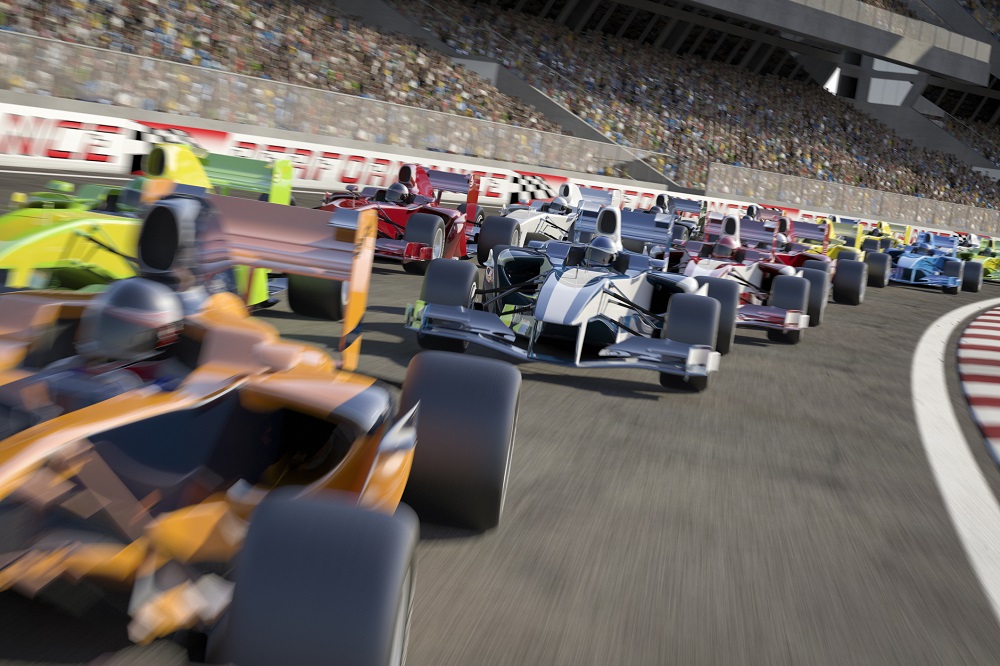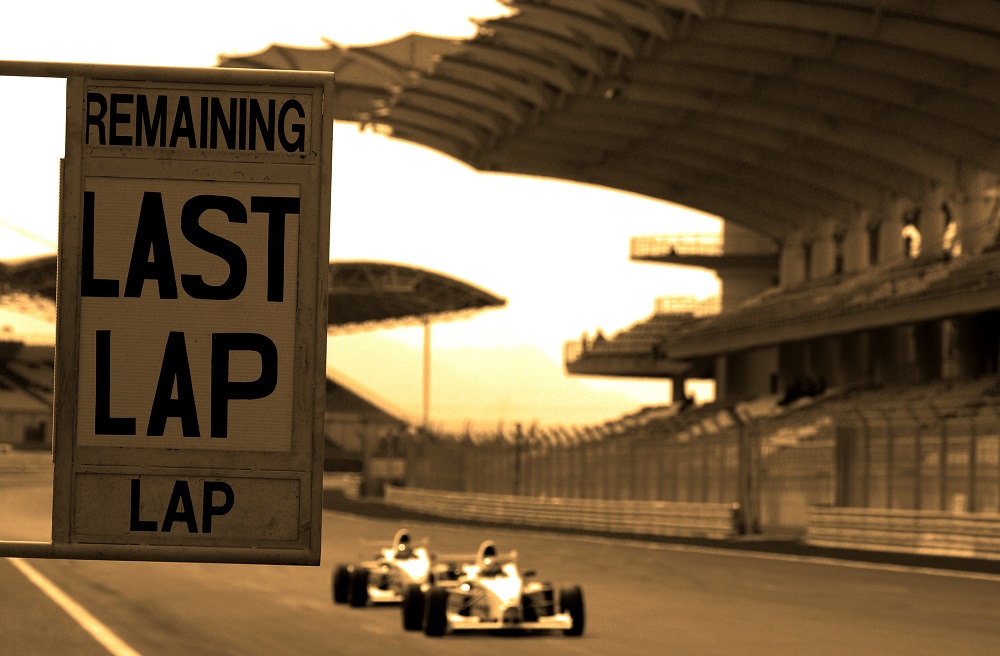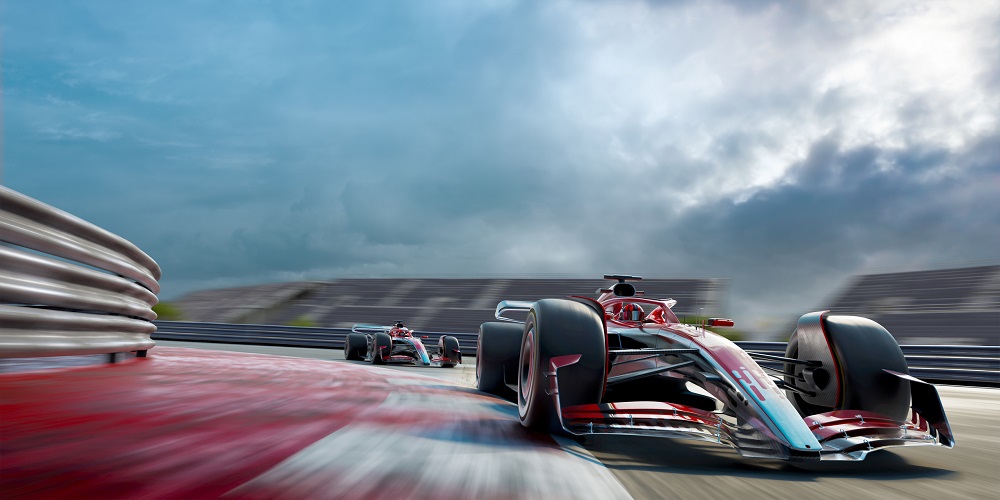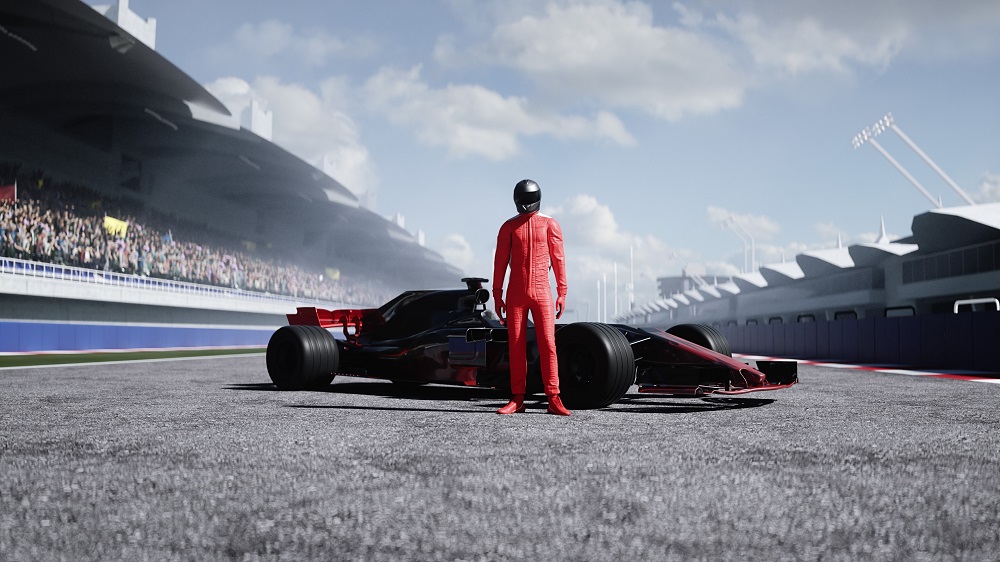Racing: video surveillance on Formula 1 World Championship
Launched in 1950, the Formula One World Championship is widely regarded as both the world’s most prestigious motorsport competition and its most popular annual sporting series. The sport is defined by relentless innovation, constantly advancing technology to secure victory. Most people can’t even imagine the scale to which video surveillance is really used in F1 nowadays! Tens of cameras on the circuits, onboard and inside cars, and Gyro Cameras – all are strategically placed to monitor the entire track environment, pit lanes, paddocks, and spectator stands to ensure safety and security and provide each eye-catching moment in great detail. In the article we’ll explore to what extent video surveillance makes up that incredible experience we have with Formula 1 today.

CCTV on a circuit
F1 circuits are equipped with extensive CCTV systems, consisting of around 60 camera feeds. This fact, multiplied by almost flying car speed, requires unprecedented precision in camera interaction. Gladly, modern video surveillance software can support over 5000 camera models and brands (analog, IP, PTZ, fisheye, etc.) and up to thousands of cameras on a single server that brings confidence within the race duration.
Motion detection with advanced false alarm filtering implements quick hazard detection on and around the circuit. Automatic object tracking with PTZ cameras follows moving vehicles or individuals, while the cross-line detector signalizes about each accidental or intentional line intersection.
Another critical aspect is race control. Entire track environments, pit lanes, paddocks, and spectator stands call for full remote access from any place for centralized race control monitoring. Last but not least, sabotage detection is incredibly important to immediately observe camera tampering or failure, ensuring uninterrupted coverage.
F1 stages and CCTV technologies applied

In the mind map below, we’ll explore which goals are in the main focus during each race stage – Practice, Qualifying, and Grand Prix.
-
F1 Stages
-
Practice
- Definition: Practical sessions during which teams check that the car is assembled correctly and that everything works as it should.
- Focus: Focuses on safety during practice runs, optimizing operational logistics, and retrospective analysis of tests.
- Features to use:
- Motion detection with advanced false alarm filtering
- Heat maps and movement visualization
- Slip and fall detector
- Search in video archives by time or zones
-
Qualifying
- Definition: A qualifying session during which drivers lap the track, with the fastest of them receiving the best starting positions for the main race.
- Focus: Ensures strict security and access control where stakes are high in grid placement, protecting sensitive areas.
- Features to use:
- Cross-line (tripwire) detection
- Face recognition and search by photo
- License plate recognition (ANPR) with speed violation detection
- Sabotage detector
-
Grand Prix
- Definition: The main race during which each driver is required to make at least one pit stop. The length of the Grand Prix is 305 km.
- Focus: Prioritizes mass crowd safety, emergency detection, and detailed real-time monitoring of race dynamics.
- Features to use:
- Crowd detection and behavior analysis
- Fire and smoke detection
- Sound recognition (screams, gunshots, glass break)
- PTZ tracking and automatic object tracking
- Dynamic face and object blurring
-
Practice
Onboard video surveillance
Each Formula 1 car is equipped with several onboard cameras, including:
- Halo cameras (focused on the driver)
- Roof cameras
- Chassis cameras
- Nose cameras
- 360-degree cameras for full race coverage.
These cameras are equipped with weather-resistant elements such as humidity sensors and protective films to maintain image clarity in adverse conditions. For decoding the panoramic image, there are various image dewarping tools.
Onboard video is transmitted via several high-frequency antenna systems located throughout the track, ensuring continuous top-grade video coverage despite high speeds and obstacles on the track.
Recent advances include the Gyro Cam system, which combines GForce sensors and tilt control systems to simulate the tilt of the track for spectators.
AI integration in Formula 1 races

The role of AI-based functions and video analytics for the smooth race process cannot be underestimated. They ensure security, safety, and statistics.
Security
Face recognition and search by photo allow for personnel identification in paddocks or restricted areas. License plate recognition with speed violation detection can be used for vehicle monitoring in paddock and pit lanes. Sound recognition is a true assistant for detecting screams, gunshots, glass breaking, or car alarms, thus enhancing situational awareness. Detection of loitering, abandoned or missing objects prevents security threats.
Safety
The slip and fall detector is capable of identifying accidents or medical emergencies in public or team areas and can immediately notify the correct staff. Specialized AI functions like fire and smoke detection help prevent emergency situations in the track environment. Text and number recognition is able to read signs, race numbers, or pit indicators in case any action is needed for the specific car or team.
Statistics
Modern crowd detection analytics spots unusual crowd behaviors or overcrowding in spectator areas. Age and gender recognition observe the diversity of viewers year by year, while emotion recognition monitors the viewers’ excitement. Such advanced technology as eye tracking can even detect focus and attention, which could be applied for marketing purposes. Still, dynamic face blurring is an ideal tool for privacy compliance or media broadcast control.
Video surveillance for reliability and cybersecurity
In a world of various security threats, TLS/SSL encrypted communication is fundamental for secure transmission of sensitive video and telemetry data. Servers, like any other equipment, may break unexpectedly. This is where failover support comes into play, with automatic switching to backup servers for continuous monitoring during races.
Flexible user permissions and password protection provide confident control for access to video feeds and settings. APIs (web, REST, JSON) are built for integration with other systems like race control, access control, or team communications. At the same time, cloud service option can be used for remote, scalable monitoring without local server infrastructure.

Xeoma video surveillance software in the F1 context
Although Xeoma is not yet an official supplier to Formula 1, its capabilities are well suited to the needs of high-tech environments such as motorsport. With a modular constructor-like design, Xeoma allows for custom configurations for a variety of safety and operational needs, including racetrack, paddock, and team vehicle surveillance. Besides, it offers real-time monitoring and video analysis, AI-powered video analytics and remote access that can be adapted for race safety or team car surveillance systems.
Try Xeoma for free! Enter your name and your email to send the license to in the fields below, and click the ‘Get Xeoma free demo licenses to email’ button.
We urge you to refrain from using emails that contain personal data, and from sending us personal data in any other way. If you still do, by submitting this form, you confirm your consent to processing of your personal data
August 08, 2025
Read also
FIFA World Cup: stadium security is important, but safety is primary
Video surveillance system at sports building
Video monitoring in tennis: How CCTV accompanies major tennis championships
Video surveillance in golf championships: enhancing the experience and ensuring security
How CCTV keeps the Tour de France, La Vuelta and Arctic Race of Norway safe&secure
Cybersports video monitoring: how video surveillance helps in esports
Top global football leagues: the role of video surveillance